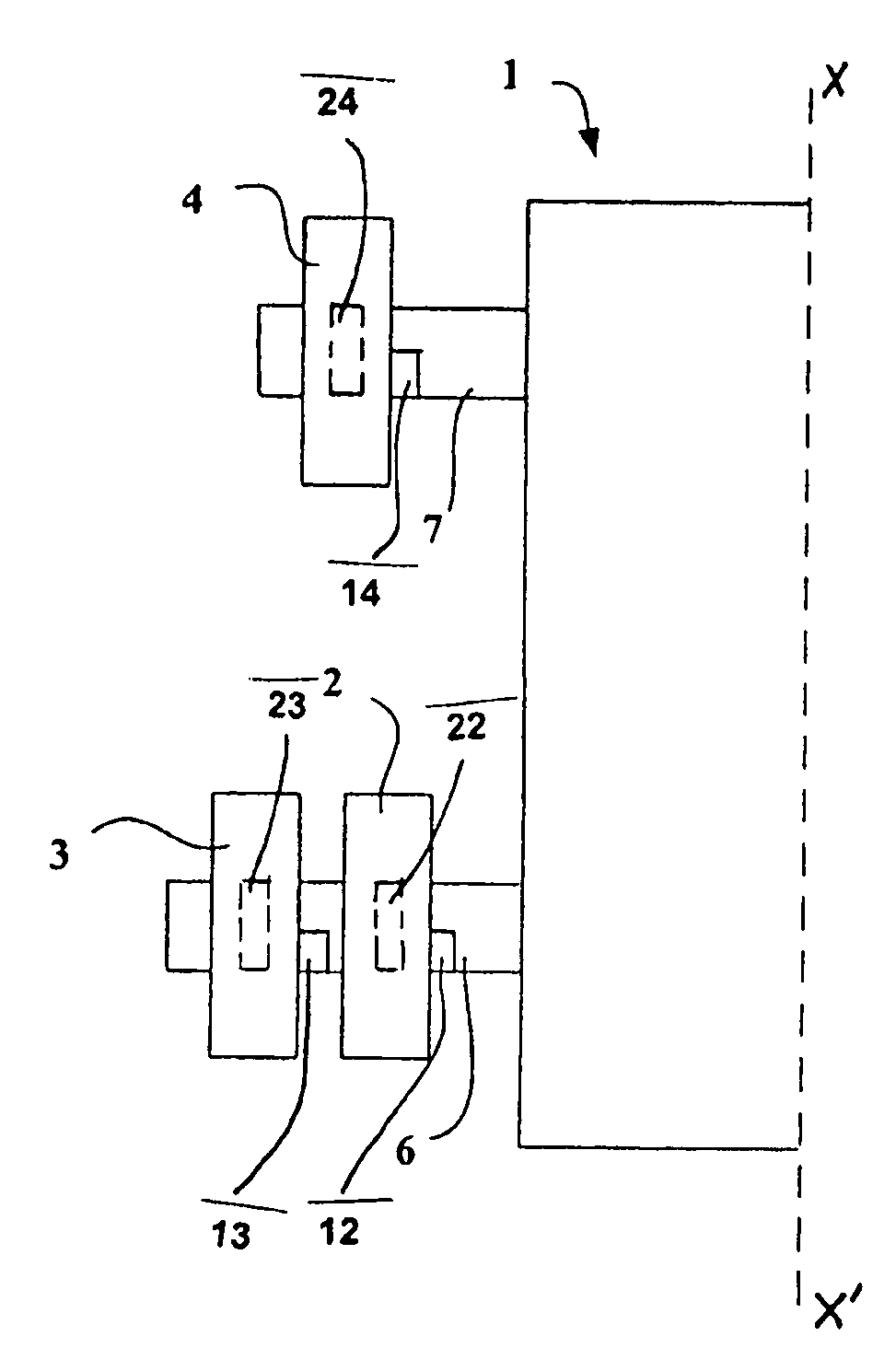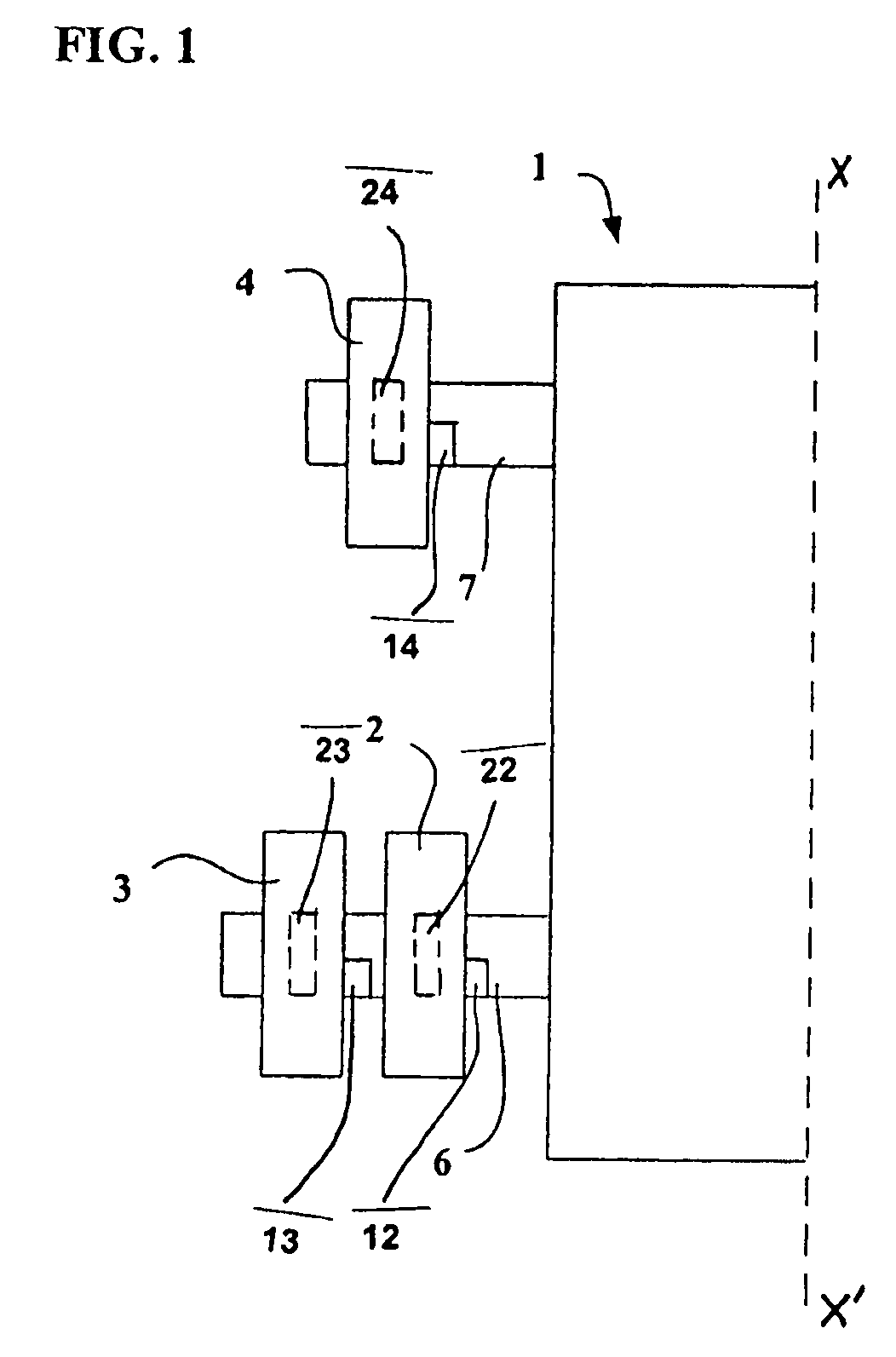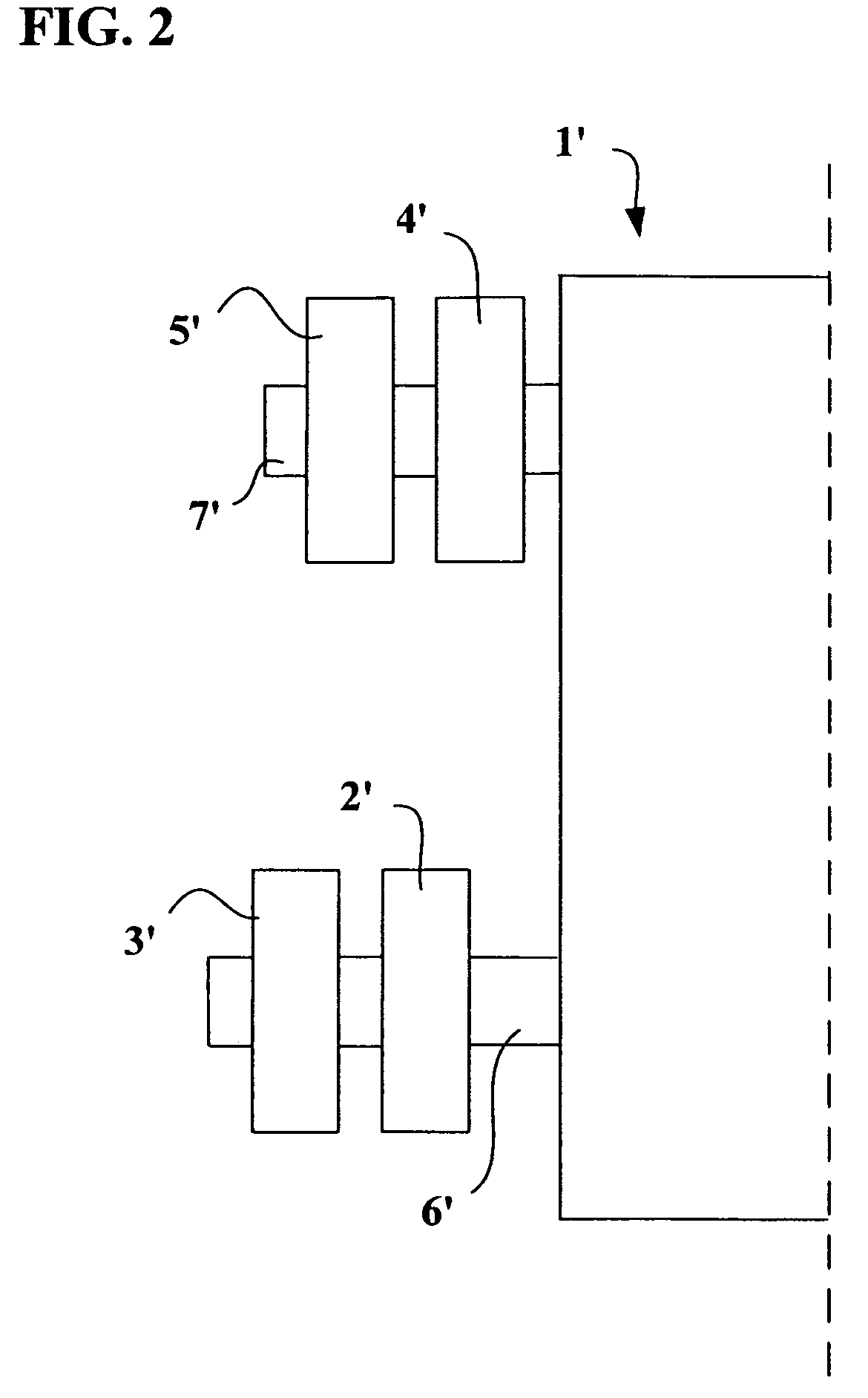Heavy vehicle
a technology for heavy vehicles and heavy vehicles, applied in the direction of loading/unloading vehicles, electric devices, transportation items, etc., can solve the problems of long time taken for these operations, long and tedious operations involved in mounting and demounting tires in the event of replacement or maintenance, and the manufacture of these vehicles to increase their loading capacity. , to achieve the effect of improving the properties of tires and improving vehicle efficiency
- Summary
- Abstract
- Description
- Claims
- Application Information
AI Technical Summary
Benefits of technology
Problems solved by technology
Method used
Image
Examples
Embodiment Construction
[0042]FIG. 1 is a diagrammatic representation of a half-vehicle 1 configured in accordance with the invention and comprising four tires on the rear driving axle 6 and two steering tires on the front steering axle 7. Since the Figure shows only half of the vehicle, only two tires 2, 3 are shown on the rear axle 6 and one tire 4 on the front axle 7.
[0043]The vehicle 1 shown diagrammatically in this FIG. 1 is a heavy vehicle having a total loaded weight of the order of 600 metric tons.
[0044]The tires with which the vehicle is fitted are large tires whose aspect ratio H / S is 0.80, H being the height of the tire on the rim and S the maximum axial width of the tire when the latter is mounted on its service rim and inflated to its recommended pressure. The tires are of dimension 59 / 80R63.
[0045]These tires comprise a radial carcass reinforcement composed of inextensible metal cables of steel, oriented radically and anchored in each tire bead.
[0046]The tires 2, 3 of the rear axle 6 are mount...
PUM
 Login to View More
Login to View More Abstract
Description
Claims
Application Information
 Login to View More
Login to View More - R&D
- Intellectual Property
- Life Sciences
- Materials
- Tech Scout
- Unparalleled Data Quality
- Higher Quality Content
- 60% Fewer Hallucinations
Browse by: Latest US Patents, China's latest patents, Technical Efficacy Thesaurus, Application Domain, Technology Topic, Popular Technical Reports.
© 2025 PatSnap. All rights reserved.Legal|Privacy policy|Modern Slavery Act Transparency Statement|Sitemap|About US| Contact US: help@patsnap.com



